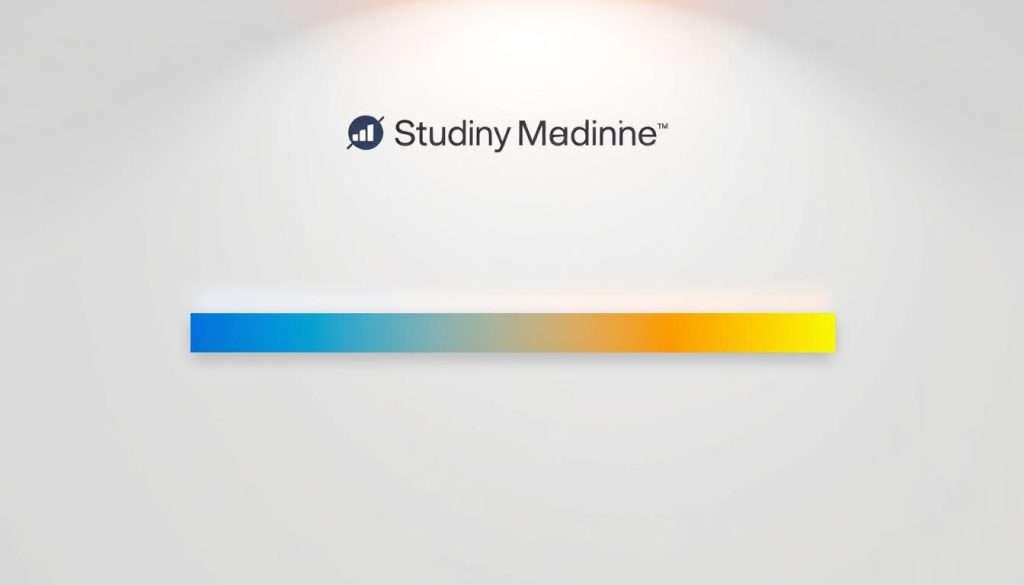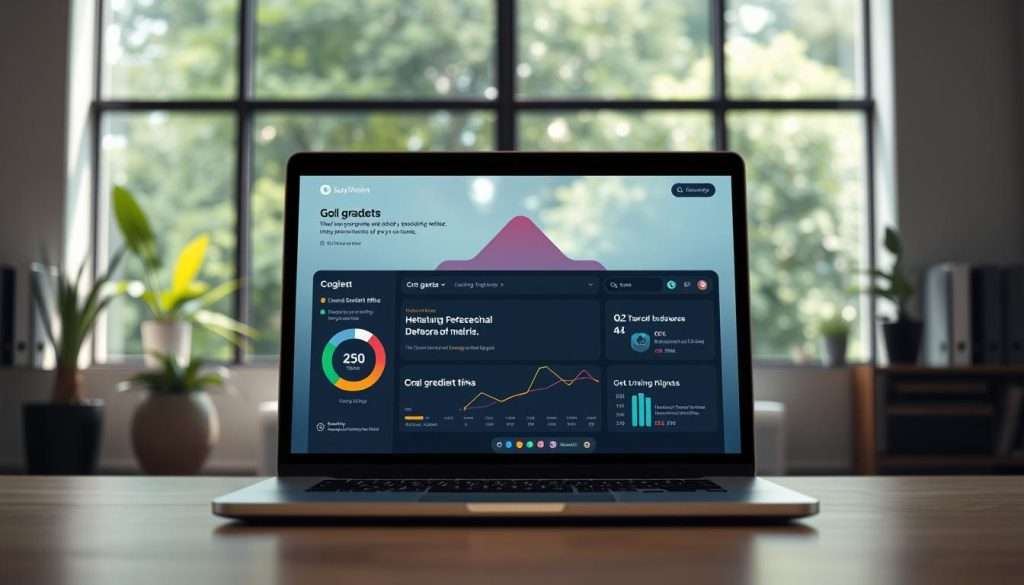We’ve all felt that excitement when starting something new, only to lose interest as we go along. But what if you could use psychology to keep your motivation up until the end?
The Goal Gradient Effect is a cool idea where our drive to finish something grows as we get closer to the end. Just imagine feeling a boost of energy as you’re almost done with a task!
This idea can really change the game for students and anyone looking to get more done. By getting how the Goal Gradient Effect works, we can use it to keep ourselves motivated and reach our goals.
Key Takeaways
- Understand the psychology behind the Goal Gradient Effect
- Learn how to harness motivation as you near your goals
- Discover practical tips to boost productivity
- Apply the Goal Gradient Effect to your daily tasks and projects
- Stay motivated and achieve your objectives with ease
What Is the Goal Gradient Effect?
Learning about the Goal Gradient Effect can change how you reach your goals. It shows how close we are to success affects our motivation. The Goal Gradient Effect is when we want to finish a task more as we get closer to it.
The Science Behind Increased Motivation Near Goal Completion
Our brains react differently when we’re near the end of a task. The closer we get, the more we want to finish. This is because our brain sees the goal’s value increase, making us more motivated. This idea comes from psychological research on how being near a goal changes our actions.
Historical Research and Key Studies
Studies on the Goal Gradient Effect started with Clark Hull’s animal maze experiments. These early studies helped us understand how being close to a goal boosts our drive.
Hull’s Animal Behavior Experiments
Hull’s work with rats in mazes showed an interesting pattern. As the rats got closer to the reward, they moved faster and tried harder. This showed the Goal Gradient Effect in action.
Modern Applications in Human Psychology
Now, the Goal Gradient Effect helps us in human psychology. It teaches us how to set up goals and tasks to keep us motivated. By breaking big goals into smaller steps, we can use the Goal Gradient Effect to succeed.
Some effective strategies include:
- Setting clear start and finish lines for tasks
- Using visual progress indicators to track advancement
- Breaking down large goals into smaller, achievable milestones
The Psychology of Goal Proximity and Motivation
Understanding the psychology behind goal proximity can really boost your motivation. As we work towards our goals, how close we feel to achieving them is key. It affects how much effort we put in and how motivated we are.
How Perceived Distance Affects Effort
The distance to a goal, whether it feels close or not, greatly impacts our motivation. When a goal seems near, we tend to work harder. For example, runners often speed up as they get closer to the finish line. This is true not just for running, but for many areas of life.
The Role of Visualization in Goal Pursuit
Visualization is a strong tool in reaching our goals. By imagining ourselves achieving our goals, we boost our motivation. “Seeing” ourselves succeed makes the goal seem closer. This uses the goal gradient effect to our benefit.
Cognitive Biases That Influence Goal Progression
Cognitive biases greatly affect how we see our progress towards goals. Two main biases are the Endowed Progress Effect and Completion Bias.
Endowed Progress Effect
The Endowed Progress Effect is when we’re more motivated by progress we’ve made. For instance, a loyalty card with several stamps can encourage more purchases to fill it up.
Completion Bias
Completion Bias is our drive to finish tasks. It makes us want to complete what we start, boosting our motivation as we get closer to the end. “We hate unfinished business,” and this bias taps into that feeling.
By grasping these psychological principles, we can design our goals and tasks better. This helps us stay motivated and reach success.
How to Identify the Goal Gradient Effect in Your Life
The goal gradient effect is real and affects our daily lives. It helps us stay motivated and focused on our goals. Recognizing this effect can make a big difference.
Signs You’re Experiencing the Gradient Effect
Do you work harder when you’re close to your goal? For example, maybe you put in more hours as a project deadline gets closer. This is a clear sign of the goal gradient effect.
Self-Assessment Questions
To see if the goal gradient effect is working for you, ask yourself:
- Do I work harder when I’m nearing a deadline?
- Do I feel more motivated when I’ve made significant progress towards my goal?
- Do I tend to slack off when a goal seems too far away?
Common Scenarios Where It Appears
The goal gradient effect shows up in many areas of life. It’s seen in personal goals and even in how we shop. For example, loyalty programs use it to keep customers coming back.
| Scenario | Description | Example |
|---|---|---|
| Personal Goals | Increased effort as you near your goal | Training harder for a marathon as the race day approaches |
| Consumer Behavior | Loyalty programs encouraging purchases | A coffee shop rewards card that tracks progress towards a free coffee |
| Professional Projects | Surge in work effort near deadlines | Putting in extra hours to complete a project on time |
Designing Effective Goal Structures
The key to unlocking your full potential is in creating a well-structured goal-setting framework. When we design our goals effectively, we boost our motivation and success chances.
Breaking Down Large Goals into Strategic Milestones
Large goals can feel overwhelming. But breaking them down into smaller, manageable milestones makes them achievable. This strategy gives us a clear roadmap to success.
The 25% Rule for Milestone Spacing
One effective way to space out your milestones is the 25% rule. Divide your main goal into quarters and set milestones at each 25% mark. For example, if your goal is to write a 100-page report, milestones could be at 25, 50, 75, and 100 pages.
Creating Meaningful Checkpoints
Checkpoints are key for tracking progress and staying motivated. To create meaningful checkpoints, focus on the most critical aspects of your goal. Set specific, measurable targets. For instance, if you’re working on a project, checkpoints might include completing the research phase, drafting the outline, and finalizing the report.
Implementing Visual Progress Indicators
Visual progress indicators are powerful for enhancing motivation. They provide a clear visual representation of your progress, keeping you engaged and focused. Some effective visual indicators include:
- Progress bars
- Checklists
- Charts and graphs
For example, you can use a progress bar to track your progress toward completing a project. 
Establishing Clear Start and Finish Lines
Clearly defining the start and finish lines of your goal is crucial. It helps maintain focus and motivation. By establishing a clear beginning and end, you create a sense of direction and purpose. Identify the specific actions you need to take to start working on your goal and the criteria you need to meet to consider it complete.
By implementing these strategies, you can create effective goal structures. These structures enhance your motivation and drive you toward success.
Practical Applications of the Goal Gradient Effect
Let’s see how the Goal Gradient Effect can help in personal growth, work success, and staying fit. It’s a powerful tool that can motivate us in many areas of life.
Personal Development Implementation
In personal growth, the Goal Gradient Effect helps us feel like we’re making progress. Breaking big goals into smaller steps keeps us motivated. Using apps or trackers to see our progress can also help.
Professional Achievement Strategies
At work, the Goal Gradient Effect works by setting milestones and celebrating them. This is especially useful in sales or managing projects.
Health and Fitness Applications
In fitness, the Goal Gradient Effect is seen in workout and diet plans. Setting clear goals helps us stay motivated to reach our fitness targets.
Workout Program Design
A good workout plan uses the Goal Gradient Effect by adding more challenge as you get closer to your goal. This keeps you excited to finish.
Nutrition and Diet Goal Setting
For diet and nutrition, setting specific goals and tracking them boosts motivation. Using apps or food diaries helps us see our progress.
| Application Area | Strategies | Benefits |
|---|---|---|
| Personal Development | Breaking down large goals, visual progress trackers | Increased motivation, sense of progress |
| Professional Achievements | Setting clear milestones, celebrating achievements | Enhanced productivity, team motivation |
| Health and Fitness | Workout program design, nutrition goal setting | Improved physical health, sustained motivation |
Leveraging the Goal Gradient Effect in Daily Habits
The Goal Gradient Effect isn’t just for big goals. It can also boost your daily habits and routines. By applying it, you can make your daily tasks more engaging and motivating.
Morning Routines That Utilize Progress Principles
Starting your day with a good morning routine sets a positive tone. Use progress principles by breaking tasks into smaller, manageable chunks. Track your progress to stay motivated.
For example, you can create a simple morning checklist:
- Wake up at 6:00 AM
- Exercise for 30 minutes
- Meditate for 10 minutes
- Have a healthy breakfast
Work Productivity Techniques
Boosting productivity at work can be achieved by applying the Goal Gradient Effect. Two effective techniques are the Pomodoro Method and Task Batching.
The Pomodoro Method with Gradient Principles
The Pomodoro Method involves working in focused 25-minute increments, followed by a 5-minute break. Visualize your progress toward completing a task to apply the Goal Gradient Effect.
Task Batching for Motivation Boosts
Task Batching involves grouping similar tasks together. This creates a sense of progress as you complete each batch, leveraging the Goal Gradient Effect.
| Technique | Description | Benefit |
|---|---|---|
| Pomodoro Method | Work in focused 25-minute increments | Enhanced focus and regular breaks |
| Task Batching | Group similar tasks together | Increased efficiency and motivation |
Evening Reflection Practices
Reflecting on your day in the evening helps you understand your progress and plan for tomorrow. Use this time to review your accomplishments and set new goals. Apply the Goal Gradient Effect to keep momentum.

Goal Gradient Effect in Business and Marketing
Businesses can really boost customer engagement by using the Goal Gradient Effect in their marketing. They can design better loyalty programs and sales funnels by understanding how close a customer is to a goal.
Loyalty Program Design Strategies
To use the Goal Gradient Effect in loyalty programs, businesses should focus on making customers feel like they’re making progress. Here’s how:
- Implementing reward cards that track customer purchases or actions
- Offering exclusive benefits as customers near a reward threshold
- Using visual indicators to show progress towards a goal
Sales Funnel Optimization
In sales funnels, the Goal Gradient Effect can be used in several ways:
- Breaking down the sales process into smaller, manageable steps
- Providing clear calls-to-action that guide customers through the funnel
- Highlighting the proximity to a purchase or sign-up completion
Customer Engagement Tactics
To boost customer engagement, businesses can try a few tactics:
Progress Bars and Completion Indicators
Visual progress indicators can really motivate customers. For example, a progress bar showing how close a customer is to completing a purchase or achieving a reward can encourage them to keep going.
Limited-Time Offers and Deadlines
Creating a sense of urgency with limited-time offers or deadlines can also leverage the Goal Gradient Effect. It motivates customers to complete their goals or purchases more quickly.
| Strategy | Description | Example |
|---|---|---|
| Loyalty Programs | Reward customers for progress towards a goal | Stamp cards for free coffee after 10 purchases |
| Sales Funnels | Guide customers through a series of steps | Multi-step sign-up process with progress indicators |
| Customer Engagement | Motivate customers with visual progress and deadlines | Progress bars showing proximity to a reward or deadline |
By using these strategies, businesses can effectively use the Goal Gradient Effect. This can enhance customer motivation and drive sales.
Digital Tools and Apps That Harness Goal Proximity
Today, apps and tools use the Goal Gradient Effect to boost motivation. With smartphones and computers everywhere, digital solutions help us reach our goals. It’s easy to see why.
Progress Tracking Applications
Progress tracking apps are simple examples of the Goal Gradient Effect. They let you set goals and see how you’re doing. You get charts, graphs, or bars to show your progress.
- Strava: A fitness app that tracks running and cycling activities, providing a visual representation of progress over time.
- Forest: An app that gamifies productivity by growing a virtual forest as you stay focused on tasks.
Gamification Platforms
Gamification platforms add game elements to goal chasing. They offer rewards, leaderboards, and challenges. These elements push users to keep moving forward.
| Platform | Description | Key Features |
|---|---|---|
| ChoreMonster | A task management app for kids that uses gamification to encourage completion of chores. | Reward system, Task assignment |
| SuperBetter | An app that uses gamification to help users achieve personal goals, such as improving physical health or productivity. | Goal setting, Progress tracking |
Productivity Software with Visual Feedback
Productivity software uses visual feedback to keep users motivated. It includes timers, progress bars, and more. These help you stay on track.
Todoist shows a visual overview of tasks and progress. Toggl tracks time and offers detailed reports on productivity.
Using these digital tools and apps can boost your motivation. They help you achieve your goals more effectively.
Overcoming Motivation Plateaus with Gradient Principles
When progress stalls, it’s time to reframe your goals and reignite your motivation. We’ve all hit a wall where our enthusiasm and drive seem to dwindle. But, by using the Goal Gradient Effect principles, you can get past these slumps and keep moving toward your goals.
Identifying Motivation Slumps
The first step to beating a motivation plateau is knowing when you’re in one. Look out for signs like feeling disconnected from your goals, lacking enthusiasm for tasks, and procrastinating.
- Feeling disconnected from your goals
- Lack of enthusiasm for tasks related to your goals
- Procrastination and avoidance behaviors
By spotting these signs, you can start taking steps to get back on track.
Reframing Goals to Create New Proximity Effects
To beat motivation plateaus, try reframing your goals. This creates new proximity effects that spark your motivation again.
The Reset Technique
The Reset Technique resets your goal’s starting point. This makes the goal feel closer, like a new gradient effect. For example, if you’re working on a big project, reset the timeline or adjust the milestones.
Artificial Milestone Creation
Another way is to create artificial milestones. Break down big goals into smaller tasks. This creates mini-gradients that keep you motivated along the way.
| Technique | Description | Benefits |
|---|---|---|
| The Reset Technique | Reset the starting point of your goal | Creates a new gradient effect, boosting motivation |
| Artificial Milestone Creation | Break down larger goals into smaller tasks | Maintains motivation through multiple mini-gradients |
Recovery Strategies When Progress Stalls
Sometimes, despite our best efforts, progress stalls. It’s crucial to have recovery strategies ready.
One good strategy is to take a break and look at your goals again with fresh eyes. This can help you spot obstacles or areas for improvement you might have missed.
By using these strategies and staying committed, you can beat motivation plateaus and keep moving forward.
Conclusion: Maximizing Your Motivation Through Goal Proximity
Understanding the Goal Gradient Effect can really boost your motivation. By focusing on goal proximity, you can make steady progress toward your goals. This makes a big difference in achieving your objectives.
The Goal Gradient Effect shows that motivation grows as you get closer to your goal. Breaking down big goals into smaller steps helps a lot. Using visual tools and setting clear goals can also make a big impact.
Now, it’s your turn to try these strategies. Whether you want to improve yourself, your career, or your health, the Goal Gradient Effect can help. By using these methods, you’ll find it easier to stay motivated and reach your goals.

